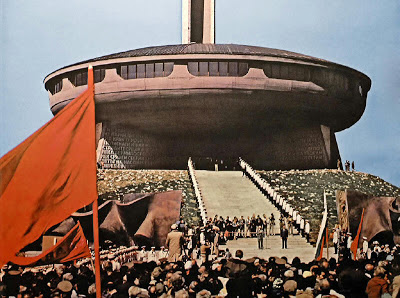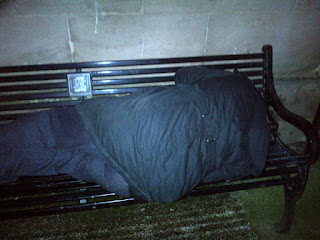and as a sign that ye be really free, ye shall be naked in your rites,
Sources and Influences
BAM: And as a sign that ye be really free, ye shall be naked in your rites, both men and women,
Leland Aradia: And as the sign that ye are truly free, ye shall be naked in your rites, both men and women also: this shall last until the last of your oppressors shall be dead; and ye shall make the game of Benevento, extinguishing the lights, and after that shall hold your supper thus... (60-66)
Thealogy
This line of the Charge refers to one of the most characteristic aspects of the religion of Wicca, and one of the most misunderstood: the regular or routine working of rituals in the nude, interpreted here as the sign of the freedom referred to in the previous section. Sometimes this is referred to as working ‘sky-clad’, a reference to a sect of Jain holy men called by this name, who renounce clothing permanently as an act of ascesis.
So why do Wiccans work their rituals, celebrate their seasonal festivals, and practise their religion naked? Gardner published an explanation for this, in the context of discussing initiation ceremonies of ‘primitive’ peoples:
‘...So when people, for example, ask me: ‘Why do you say that witches work naked?’ I can only say: ‘Because they do.’ ‘Why?’ is another question, the easy reply being that their ritual tells them that they must. Another is that their practices are the remnant of a Stone Age religion and they keep to their old ways. There is also the Church’s explanation: ‘Because witches are inherently wicked.’ But I think the witches’ own explanation is the best: ‘Because only in that way can we obtain power.’
‘Witches are taught and believe that the power resides within their bodies which they can release in various ways, the simplest being dancing round in a circle, singing or shouting, to induce a frenzy; this power they believe exudes from their bodies, clothes impeding its release. In dealing with such matters it is, of course, difficult to say how much is real and how much imagination.’ (Gerald Gardner: Witchcraft Today. Arrow Books, London, 1975, p. 20)
So Gardner actually presents two reasons for ritual nudity: one that it is a traditional thing which is not optional, and the other that without nudity witches are not able to raise the energy required to work magic.
The quotation from Aradia used in the Charge would certainly appear to be a ritual injunction of nudity for witches, but there are several difficulties with approaching it like this, since the actual standing of Aradia as an item of folklore is disputed, as is the existence or nature of the witch cult it describes, and the fact that it is the only pre-twentieth century text making ritual nudity a normal thing for witches.
Gardner’s second reason is one which is still used by many witches. However Gardner’s comment that it is difficult to discern what is imagination certainly applies here, since if people find themselves unable to work magic with clothes on, they’re obviously not very good at it. Valiente makes the sensible point that ritual nudity is not suitable for all climates (Doreen Valiente: An ABC of Witchcraft Past and Present. Robert Hale, London, 1973.). And Hutton trenchantly points out that that a requirement only to work magic naked relegates some of the greatest magicians of history to the second division (Ronald Hutton: Witches, Druids and King Arthur. Hambledon Continuum, London, 2006, Chapter 6. All further references to Hutton in this section refer to this work.).
A third reason for routine ritual nudity is given by witches: that it reinforces a feeling of equality and democracy in the coven.
In his consideration of this aspect of Wicca Hutton replies that this cannot be true since Wicca covens are actually arranged hierarchically. He suggests several other functions of ritual nudity in Wicca: it reinforces and tests the trust and confidence between the members of the coven; together with the other elements of ritual, it reinforces the sense that something out of the ordinary is happening. Among the reasons for its inclusion in Wiccan ritual he does not discount Gardner’s own enthusiasm for naturism, and the fact that routine ritual nudity is one of the many ways in which Wicca is unconventional.
Historical precedents for ritual nudity are not lacking, no single one of which he accepts as an explanation for the presence of ritual nudity in Wicca, albeit that this is one of those areas where texts and artefacts are open to misinterpretation. Hutton found that ritual nudity did have a place in ancient religion, but not as a routine thing, only for initiation rituals and mystery religions. He even gives an example of early Christians, which was very much a mystery religion at the time, being baptised naked.
The second precedent is the association of nudity with countercultural religion and Christian heresies: the problem with this being that the evidence is usual supplied by the other side of the argument. Hutton finds no evidence for routine ritual nudity for all the worshippers, as opposed to groups of ascetics, for example, in any religion. He does cite an example of a nude ritual in New Orleans vodou, but I do not believe it to be the norm in that tradition.
As for the witch trials, there is little or no reference to nudity (except in the case of solitary trials), but as Hutton points out, since there is no evidence for an early modern witch cult, this would not impact on the religious history of ritual nudity. The cultural figure of the witch, however, is associated with nudity, not so much in literature in Europe, but in much northern European, and especially German, art; this may have been used as a pretext to create an opportunity to paint female nudes.
Hutton does, however, find that the worldwide malevolent figure, traditionally called by the word ‘witch’ in English, is very frequently associated with nudity, which seems to be related to the reversal-of-everyday-life motif in the witch figure.
One last source for this is traditional operative magic, but only in a solitary context. This is why nudity is only mentioned in the trials of individual witches.
Hutton concludes that ritual nudity is one of the things which mark out Wicca as a magical religion, that while nudity has a small, marginal history in the world of religion, it has a much greater history in the world of magic, and is part of Wicca’s dissolution of the traditional boundary between magic and religion. He states that this places Wiccan ritual nudity in a great and venerable tradition of magical activity, and that it is certainly not based on the predilections of Gerald Gardner alone.
There are of course two criticisms of group nudity in the context of the ritual activity of Wicca: one is that it is open to misinterpretation. Members of the Craft with responsible jobs to keep, or children to retain custody of, would do well even now to remember that outsiders do not understand what they do as a religion, knowledge of these activities can be used against them, and skyclad working is bound to be the first thing a malicious observer would seize upon. The way outsiders view skyclad working is perhaps best summarised in a fictional account of inter-coven rivalry, in which photographs of a skyclad doctor are used as a weapon:
‘...clear colour photographs of the undressed physician with his lips enthusiastically planted on the puckered breast of Belladonna, who was holding a wand in one hand and a whip in the other. This, to witches, was merely the sight of a High Priest performing the ‘Fivefold Kiss’ which precedes the Charge of the Goddess and is a part of every Opening Ritual. It is accompanied by the words, ‘Blessed be thy breasts, formed in beauty’, and is central to a sacred ceremony devoted to the worship of the Divine Feminine, She Who Sees All.
‘To those ignorant of the Wiccan Way it was a permissive display (with sado-masochistic overtones) of a respected member of the community whose job required behavioural decorum.’ (Jessica Berens: Queen of the Witches. Arrow Books, London, 1995, p. 163.)
Valiente commented on the other criticism of skyclad working: that it can also be misinterpreted by those coming into the Craft:
‘...many of the older witches feel that all the publicity about nude witch dances has attracted quite the wrong sort of interest in what is, or ought to be, the Craft of the Wise. People come to it who are just looking for a bit of sexual excitement, without any serious commitment or belief. Too much emphasis, they feel, has been put on this feature of the Old Religion. They think that, along with the other old practice of ritual flagellation, ritual nudity is something that could well fade into the past, without any detriment to the witch cult, but rather the reverse.’ (Doreen Valiente: An ABC of Witchcraft Past and Present. Robert Hale, London, 1973, p. 254.)












































